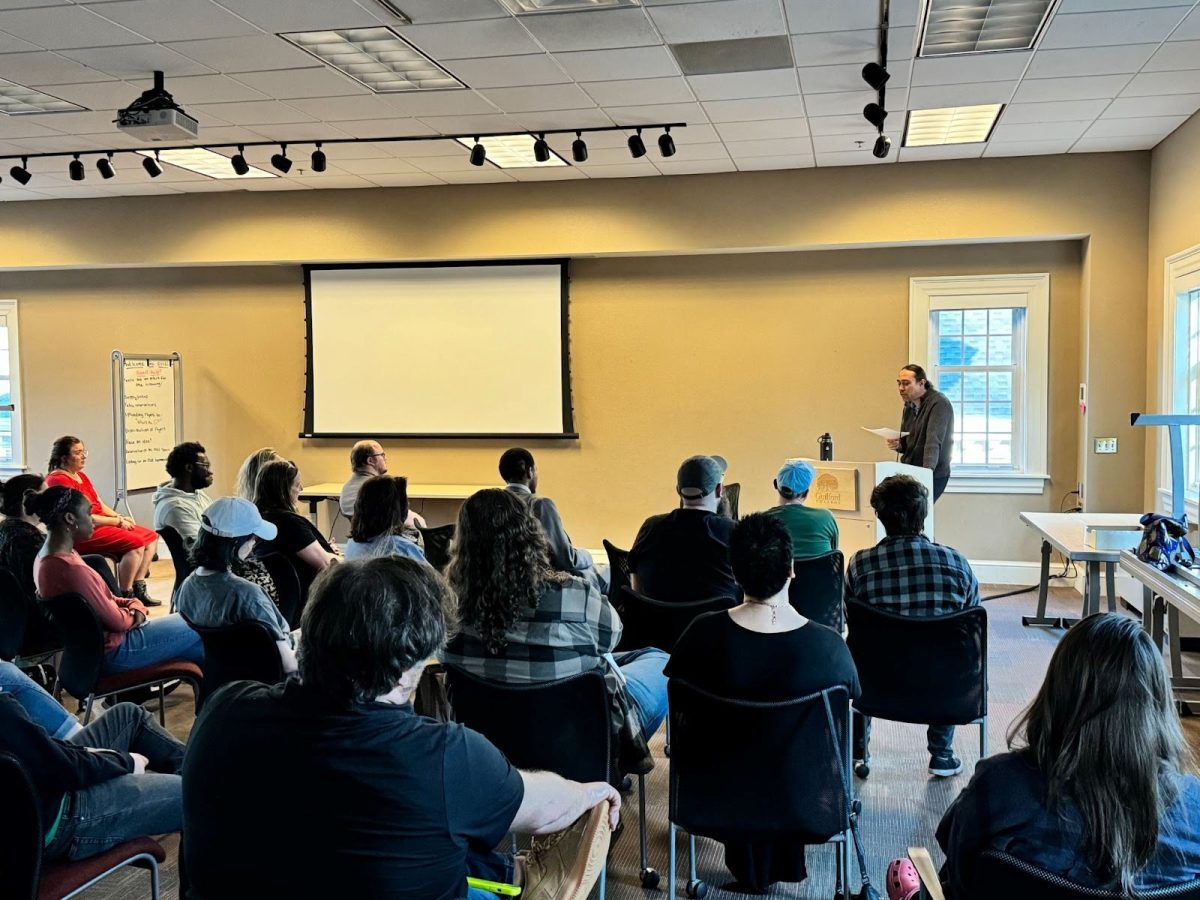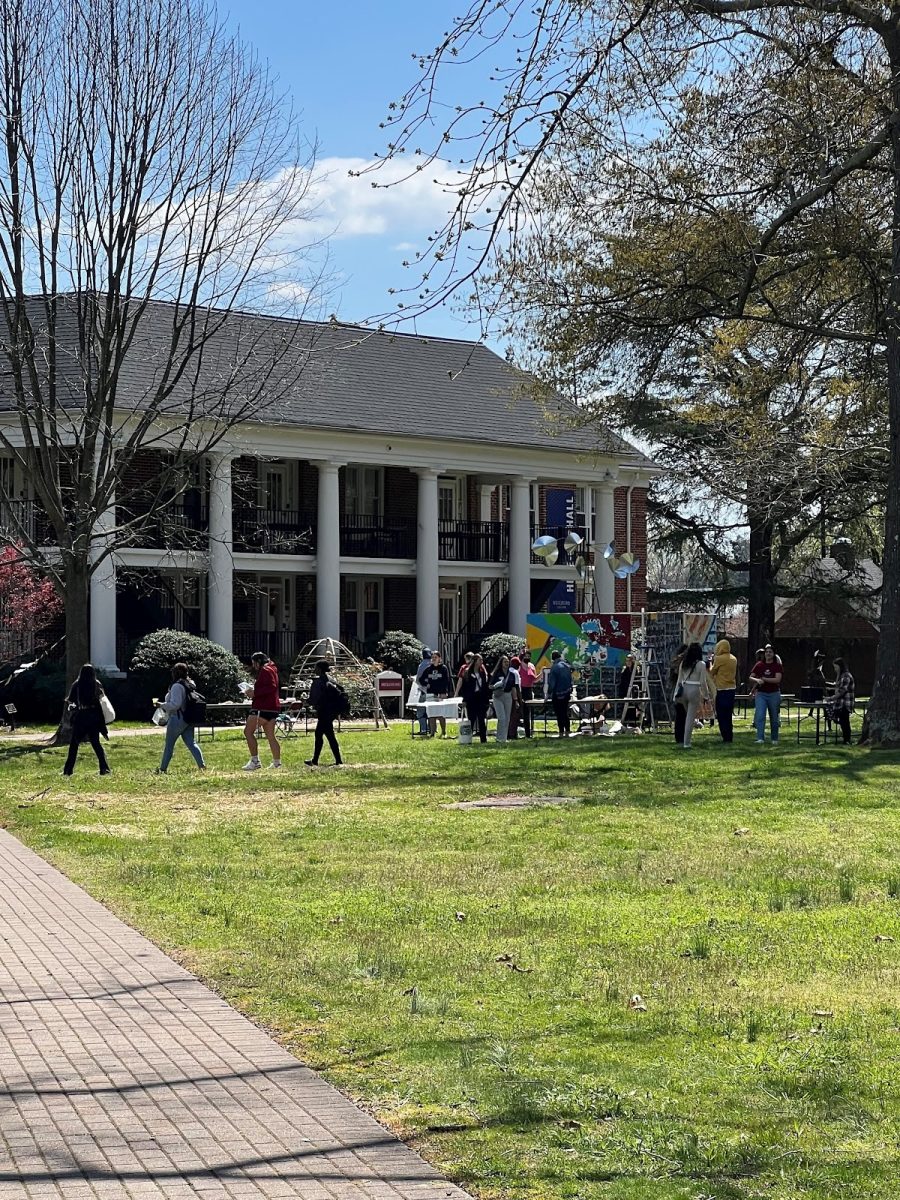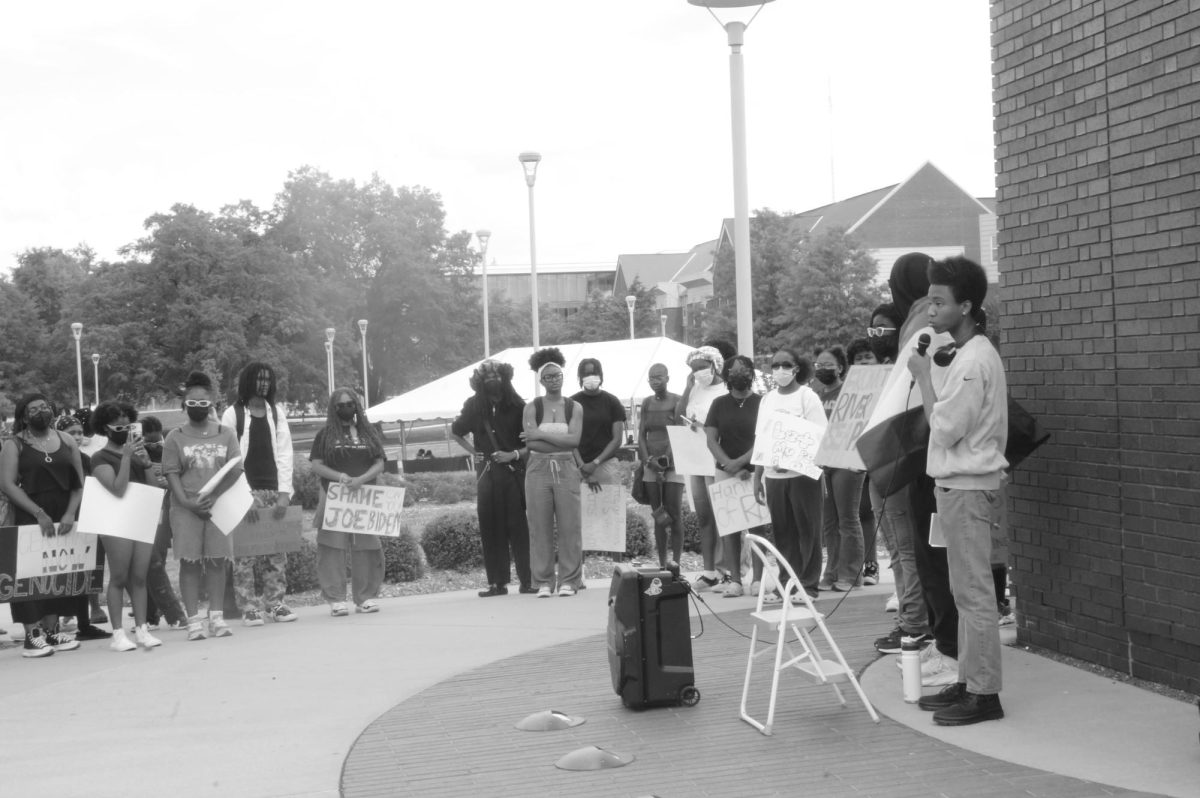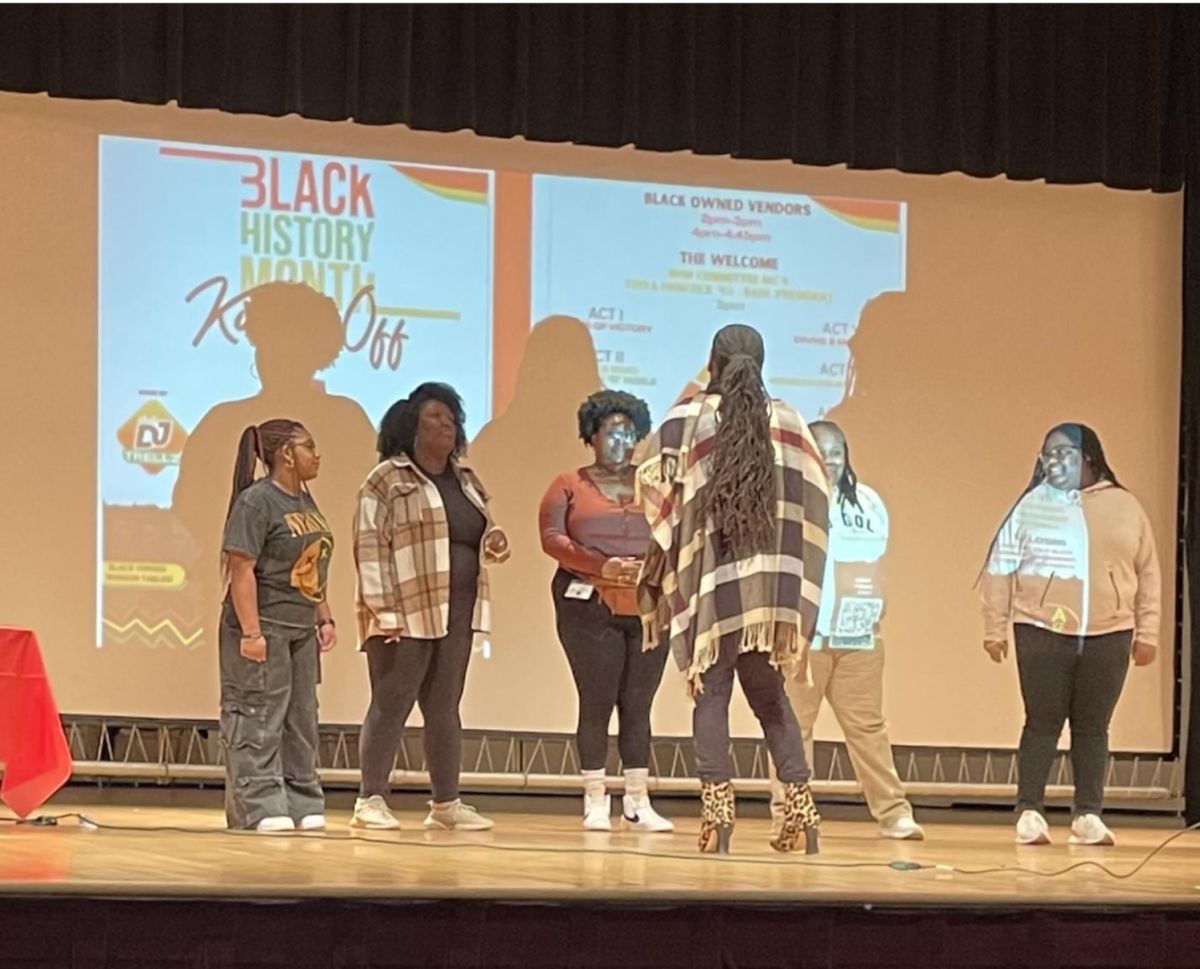“Hello comrades,” said National Geographic writer Cynthia Gorney as she entered the Journalism class with Jon Sawyer, founding executive director of the Pulitzer Center on Crisis Reporting on April 4.
Along with Wake Forest University and High Point University, Guilford College recently joined the Pulitzer Center’s Campus Consortium, a program that brings top journalists to the Triad to raise awareness and foster discussion of underreported global topics.
“The major objective (of the Pulitzer Center) is to fill gaps in coverage of global issues,” said Sawyer. “I had been doing work on international reporting for many years, so I was conscious of the fact that there were less resources and fewer dollars available. I thought it would be possible to set up a non-profit organization under which we could raise money to make (these resources) available to journalists and support this kind of work.”
During their visit and reception the following day, both Gorney and Sawyer conversed with students and answered several questions about being journalists and their views on news coverage.
“I thought that they were both really inspiring and informative,” said sophomore Keyla Beebe, an attendee of the reception and Guilford’s first student fellow with the Pulitzer Center. “It was nice to be in such an informal and intimate setting with two experienced journalists, and I think the visit can be extremely beneficial for students.”
Gorney, former South American bureau chief for The Washington Post and contributing writer for The New York Times Magazine and National Geographic, presented on a specific article that has recently garnered global attention called “The Secret World of Child Brides.”
“The very first thing that I said to my editor was, ‘How is that a story?’” said Gorney. “I thought it was horrible, and these (perpetrators of forced marriages) should all be shot. I asked what is there … to write about, and she said it was actually complicated.”
In Gorney’s article, she discusses the controversial marriages of brides as young as five years old in countries such as Yemen, India and Ethiopia.
“Two of the brides, the sisters Radha and Gora, were 15 and 13, old enough to understand what was happening,” wrote Gorney in her National Geographic article. “The third, their niece Rajani, was five. She wore a pink T-shirt with a butterfly design on the shoulder. A grown-up helped her pull it off to bathe.”
What has been the way of life for some has only recently been disclosed to the rest of the world through Gorney’s eye-opening article. As many from a Western perspective argue these abominable rituals should be eradicated, she illustrates the complexity of transforming widely held cultural practices and beliefs.
“The most shocking moment for me was when I found myself understanding why a parent would arrange marriage for a small child (or) any girl under 18,” said Gorney. “It wasn’t because I thought it was okay, but it was because I understood the logic. Getting the idea that in some of these situations, there is a strong element of love and conviction that you’re doing the right thing was the most shocking moment.”
Gorney offered two major solutions for ending the practice of child brides.
First, keep girls in schools for as long as possible. Second, obtain support from the government and the public through public education campaigns and village discussions rather than through ineffective punitive measures.
Additionally, she emphasized the necessary gradual shift in understanding women’s cultural roles.
“The obsession with purity and virginity for women needs to be really thought through,” Gorney said. “A strong argument that is constantly used for these girls being married off early is that this way they would keep their purity and can be ensured that they will be virgins when married, and thus will be accepted in society.”
However, with virginity comes the price of a child bride’s future and childhood filled with misery. And possible death.
“Newspapers were reporting that a bride from a village had been dropped off at a Sanaa hospital four days after her wedding,” wrote Gorney in her article. “Sexual intercourse appeared to have ruptured the girl’s internal organs … she had bled to death. She was 13 years old.”






